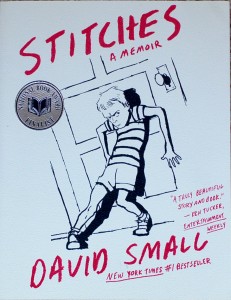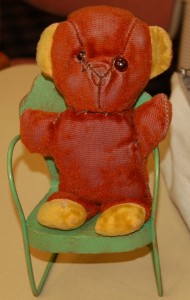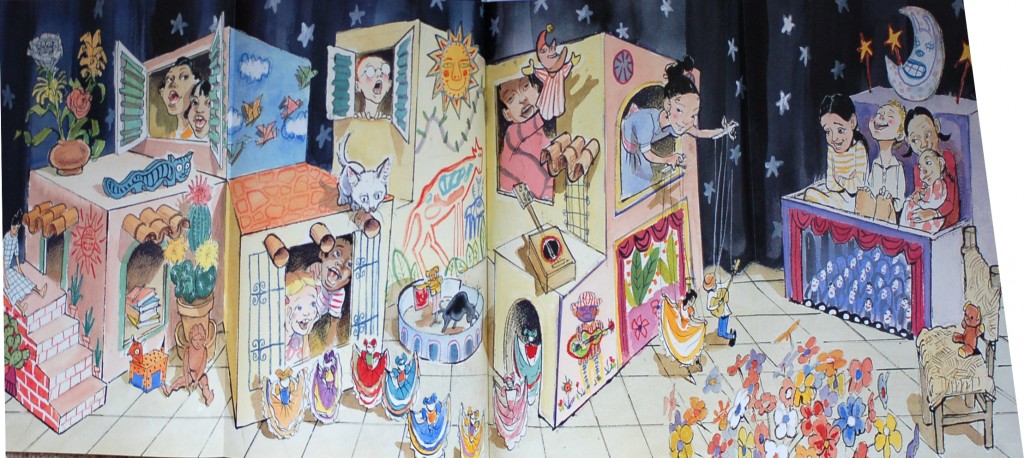May is our month to recognize mothers.
What children’s book mothers go above and beyond?
Welcome to KidLit Gems!
Join us in a coffee-style chat about favorite children’s books and the elements that make them shine.
This month’s theme: KidLit Gems for Mom
 GASTON
GASTON
Text © 2014, Kelly DiPucchio
Illustrations © 2014, Christian Robinson
Age Range:
4-8 years
Grade Level:
Preschool-Third
Antheneum Books
for
Young Readers
An imprint of Simon & Schuster Children’s Publishing Division
Awards
Kirkus, Starred Review
Horn Book Magazine, Starred Review
Shelf Awareness, Starred Review
Publisher’s Weekly, Best Summer Books 2014
Mrs. Poodle admired her new puppies, Fi-Fi, Foo-Foo, Ooh-La-La, and Gaston. ~ Gaston
Gaston is a story about a delivery room mix-up that goes right. What’s not to love? It has humor. Fi-Fi? Foo-Foo? Ooh-La-La? I bet Kelly DiPucchio’s critique group spit cappuccino out of their noses when they first read these names out loud.
It has smarts. Alliterations please the ears: “There was much to see. Daffodils. Ducklings. Dogs.” Attention-getting cues engage: “Would you like to see them again?”
It has heart. Despite parenting alone and discovering a post-delivery mix-up, the canine supermoms, Mrs. Poodle and Mrs. Bulldog, raise well-adjusted, thriving offspring. This is the perfect book for those who question their place in the world. While researching Gaston, I was surprised by nature vs. nurture debates. My take: While every family situation is different, one element remains the same. Belonging isn’t about similarities. It’s about love.
Christian Robinson’s retro illustrations, including the Poodle and Bulldog family pictures; make me miss my sentimental supermom; and my fairly normal, but unique gold, orange, and green childhood.
~ Anna
___________________________________________________________________
From that day forward the families met in the park every afternoon to play. Rocky, Ricky, Bruno, and Antoinette taught the poodle puppies a thing or two about being tough.
Likewise, Fi-Fi, Foo-Foo, Ooh-La-La, and Gaston taught the bulldog puppies a thing or two about being tender. ~ Gaston
Gaston reminds me of Romeo & Juliet, two families from opposite sides of the tracks, circling their territory. This age appropriate picture book’s delightful alliteration, rhymes and Matisse-esque illustrations contribute to the age-old adage, “opposites attract”. Children will delight as the “brutish or brawny” and the “proper or precious” unite. Three cheers for the mothers in this story that wisely, stand-by as Gaston and Antoinette explore their true identities. And unlike Romeo & Juliet, where the families are meddling, there is a happy ending to this love story.
~ Kristi
Watch for Kristi’s pick next!
We want to hear from you!
What children’s book moms excel in the motherhood department?


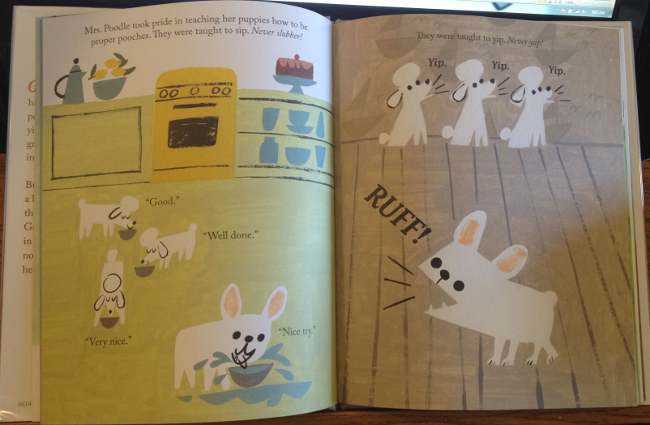


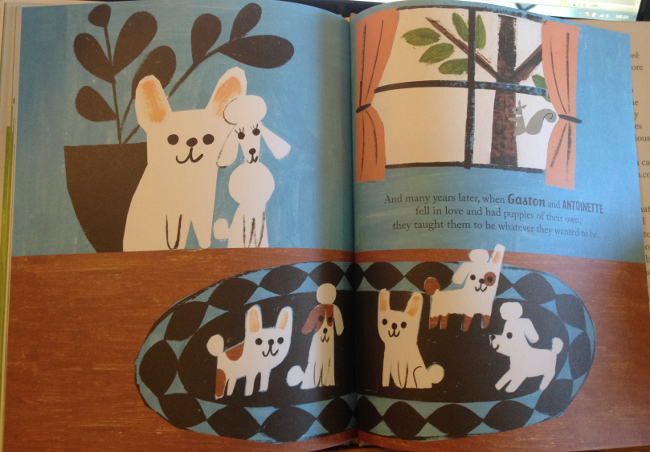

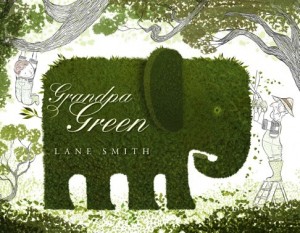






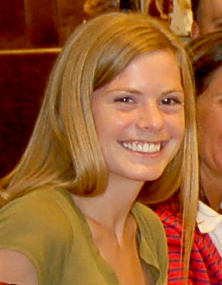 Before my friend Elise becomes any more famous, I have one thing to say: I know her.
Before my friend Elise becomes any more famous, I have one thing to say: I know her.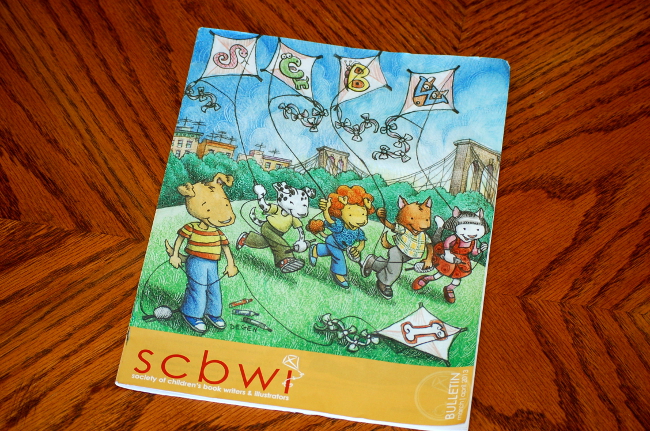 What better endorsement?
What better endorsement?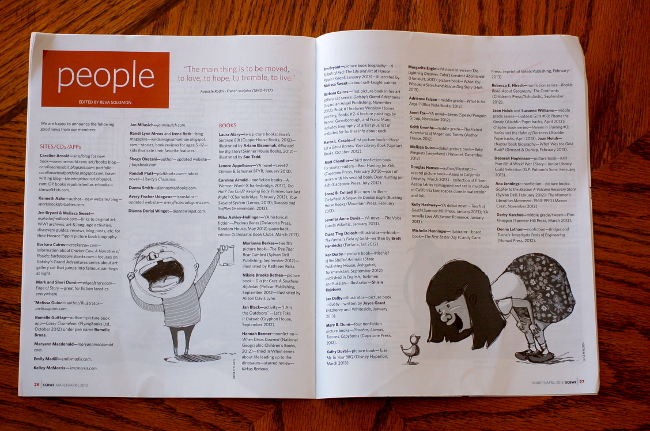 The illustrations are Elise’s. I think you’ll agree
The illustrations are Elise’s. I think you’ll agree 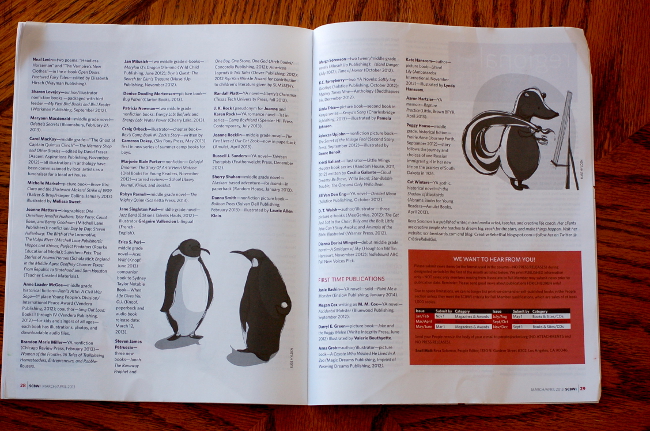 — Elise has a bright future on the horizon. Her imaginative creations already delight us. We can’t wait until everyone can enjoy them.
— Elise has a bright future on the horizon. Her imaginative creations already delight us. We can’t wait until everyone can enjoy them.
